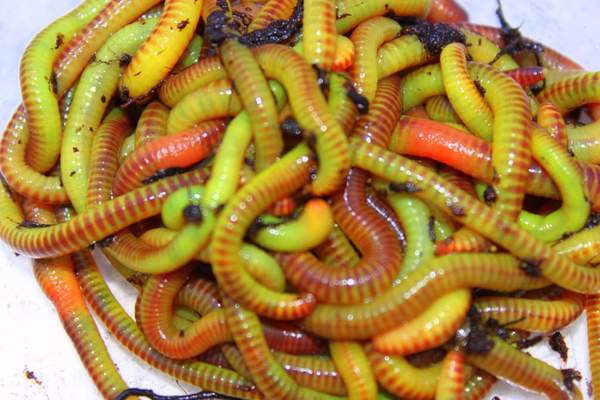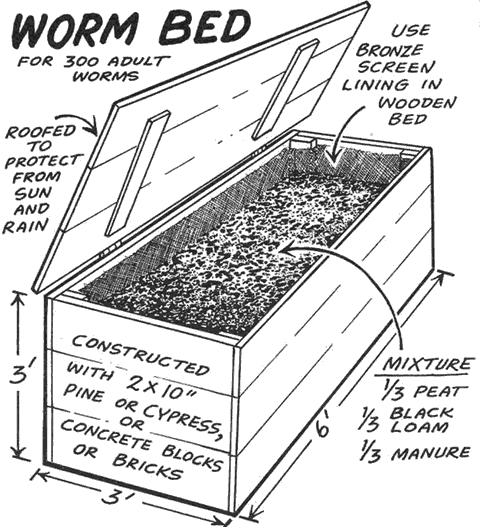The smart Trick of Where To Find Red Wigglers That Nobody is Discussing
The smart Trick of Where To Find Red Wigglers That Nobody is Discussing
Blog Article
9 Easy Facts About Where To Find Red Wigglers Explained
Table of ContentsWhere To Find Red Wigglers for Dummies5 Easy Facts About Where To Find Red Wigglers ExplainedWhere To Find Red Wigglers Fundamentals ExplainedThe smart Trick of Where To Find Red Wigglers That Nobody is DiscussingUnknown Facts About Where To Find Red WigglersNot known Facts About Where To Find Red Wigglers5 Easy Facts About Where To Find Red Wigglers Described
If you have a tough time situating them, try utilizing a shovel to dig right into the ground and break the wet dirt with your hands to discover them (Where To Find Red Wigglers). Soak your yard or lawn with water and look for your worms once it gets dark.Lift it utilizing leverage and search for your worms inside the opening. Don't forget to look under rocks, bricks, timber, and other things you might find on the ground, as that's where worms frequently stay.
Once you catch a number of worms, you will certainly desire to dip your fingers right into sawdust to dry them and improve your following grasp. Note that you should not eliminate way too many worms from one area as this can negatively affect that environment. Position your worms right into their bin and store them in the fridge.
You can additionally utilize a pitchfork to entice worms in the air. Additionally referred to as a worm grunting stick, this typical technique entails sticking the pitchfork into the ground and then massaging it with a piece of metal or wood. The vibrations that are developed resemble the sound of a mole, which causes the worms to surface.
How Where To Find Red Wigglers can Save You Time, Stress, and Money.
All you require to store the little wigglers is a tiny styrofoam cooler, some dirt, bedding, and natural food waste. Some people sometimes sprinkle a little cornmeal to maintain the worms healthy and happy. Nevertheless, for long-lasting worm storage, we suggest building a devoted worm ranch. With any luck, you uncovered several ways to capture your worms the next time you require them after shutting hours or when you're really feeling also lazy to enter the auto and drive a number of miles to the nearby worm dealership! There is always an easy escape for those seeking to stay clear of obtaining unclean in the garden.
We'll speak concerning just how to preserve red wigglers and why they should be the best worm for many composters. Enjoyable reality: The "fetid" part of the binomial name refers to what some say is a fetid secretion the red wiggler utilizes to fend off predators. The composition of a red wiggler appears like that of various other usual earthworms; a long-segmented body starts at the pointed head and ends at a slightly-flatted tail.
The gastrointestinal tract is straightforward, beginning at the mouth where the worm begins to consume its food before passing it on to the vocal cords. The pharynx is a muscle section which imitates a pump to draw food into the mouth before pumping it out right into the esophagus. The esophagus is narrow and thin-walled and functions as the "waiting area" for the gizzard.
Facts About Where To Find Red Wigglers Revealed
Keep in mind: This demand for grinding is why grit is suggested in a worm container. The worm includes no indigenous grinding capacity so the worm depends on consumed grit to help grind its food in the gizzard. The tummy is where the very first chemical break down of food occurs with the help of a protein-busting enzyme.
The intestinal tract forms the lengthiest component of the worm and is where the majority of food digestion takes place using enymatic processes. The spreadings eventually pass via the anus at the end of the worm as pills coated with a biologically-rich mucus.
Within 42 days, these baby worms will certainly get to sexual maturity as evidenced by the introduction of the clitellum. A fully grown red wiggler can be anticipated to live in between one to three years (Where To Find Red Wigglers). The mighty red wiggler might in some cases be utilized as a lure worm for smaller sized fish or as a healthy protein resource for chickens and reptiles
And as mentioned over, they are the most common composting worm in the globe. Rather, a mix of expense, strength, and comfort in a wide range of temperature levels makes it the most suitable composting worm for many brand-new vermicomposters.
What Does Where To Find Red Wigglers Do?
This is a typical practice among worm carriers that don't desire to run the risk of having the worms rest in a warm or cool storehouse over the weekend break. Worm cultivators are not saving worms in a situation where they are all set to deliver. The worms must be harvested from their environment first, so farmers will certainly usually set a Friday or Saturday due date in order to harvest in time for a Monday delivery.
To conserve on shipping cost, you may desire to see if there are any nearby "Mom and Pop" shops through a learn the facts here now Google search.

Some Ideas on Where To Find Red Wigglers You Need To Know
For best results, you desire to fire for concerning 60-70% dampness level. At the best wetness levels which is just under 70% that handful should hardly generate one drop of liquid.
The European Nightcrawler, the larger cousin of the red wiggler, is equally as starved and also produces a great bait worm. It chooses a bit of a cooler setting than the red wiggler. The African Nightcrawler is a huge composting worm and makes a gorgeous, granular cast.
The Indian Blue is starved, however additionally prefers a warmer climate and it likewise displays a tendency to escape the bin. The red wiggler is a hardy worm and isn't as choosy about its environment. I like to call it the Ford Taurus of vermicomposting worms; you will not brag to your hardcore composting friends useful reference that you own them, however they will certainly serve you well.
Some Ideas on Where To Find Red Wigglers You Need To Know
Like any other lure, a worm's performance has pertained to rely on its presentation. H.G. "Faucet" Tapply emphasized this factor virtually a half century ago in one of his Area & Stream columns. "A worm is such a shapeless creature," he wrote, "there does not appear to be quite a fisherman can do with it except stab it on a hook and toss it into the water." As Tap showed, a fishermen can do an excellent deal to make a worm more enticing.

Early morning is prime feeding time, and the insubstantial lure's slow descent leaves 5 inches of agonizing healthy protein in complete sight for fairly a while. After you've made the cast, maintain the bail open and put the pole in a forked stick. The line will diminish the pole in sluggish loopholes as the worm works out, however much more often than not the sluggish loops will come to be a blur, and the morning will instantly get instead fascinating.
I normally use an entire 'crawler, choose marabou clothing, and drop the rod for two or three secs when I obtain a hit.
All About Where To Find Red Wigglers
And distinguishing bottom from a bite can be challenging. The method is to reduce the pole back to the strike (perhaps a foot) and feel for life at the end of the tightening line. If it's there, established the hook with a sweep instead of a jerk. Once in a while you'll discover yourself hooked to those check here slow-moving, passionate tugs, and feel the weight of a wonderful walleye.
Report this page